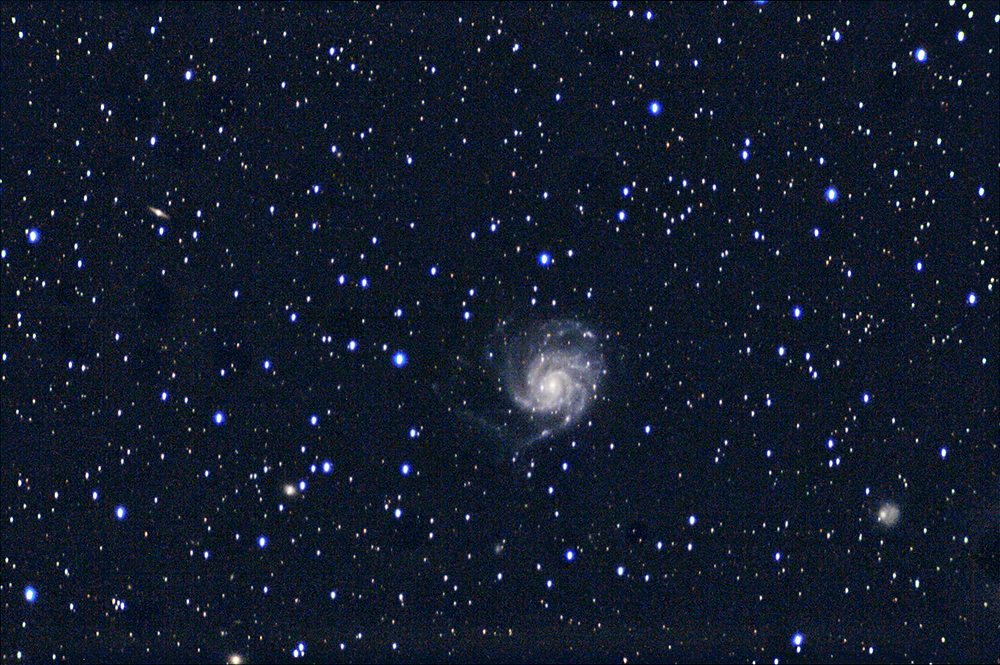
Combination of 5, 180 second images. Modified Canon Digital Rebel DSLR camera.
5" f/5 refractor at prime focus.
| Object Type | Galaxy SBc |
| Constellation | Ursa Major |
| Magnitude | 7.5 |
| Size | 29.0' x 27.0' |
M101 is a beautiful face-on, spiral galaxy in Ursa Major. Although the total magnitude is a relatively bright 7.5, the large size of the galaxy makes it a difficult object for smaller telescopes if the skies less that perfect. It is visible as an eliptical patch of light in an 8" telescope, while a 12" begins to show some hints of spiral structure.

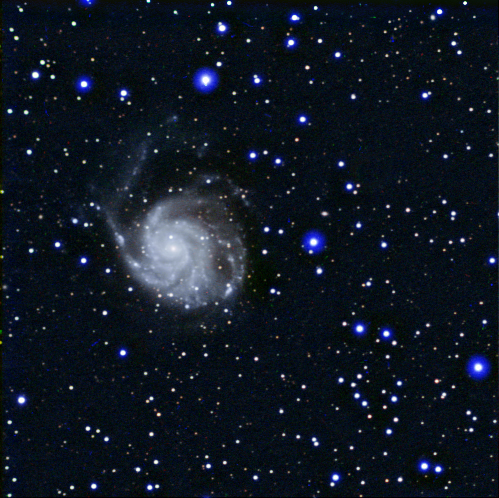
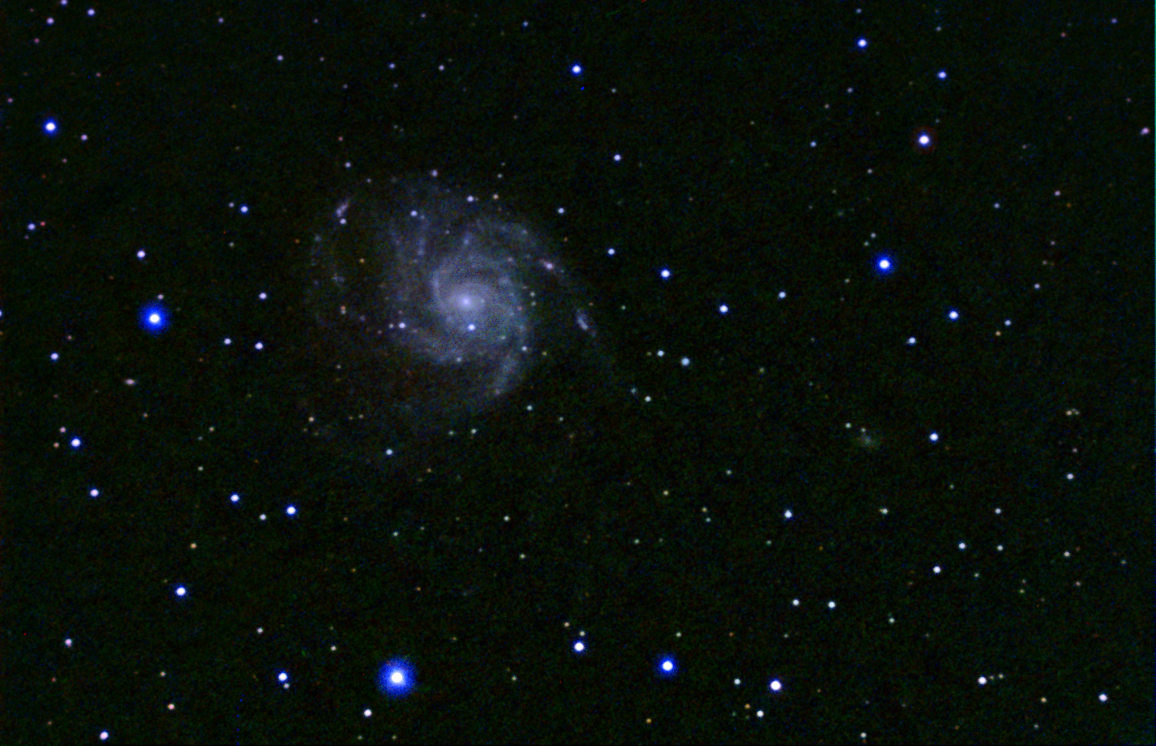
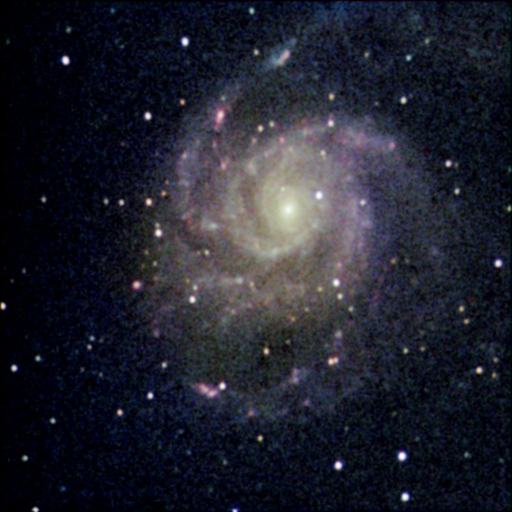
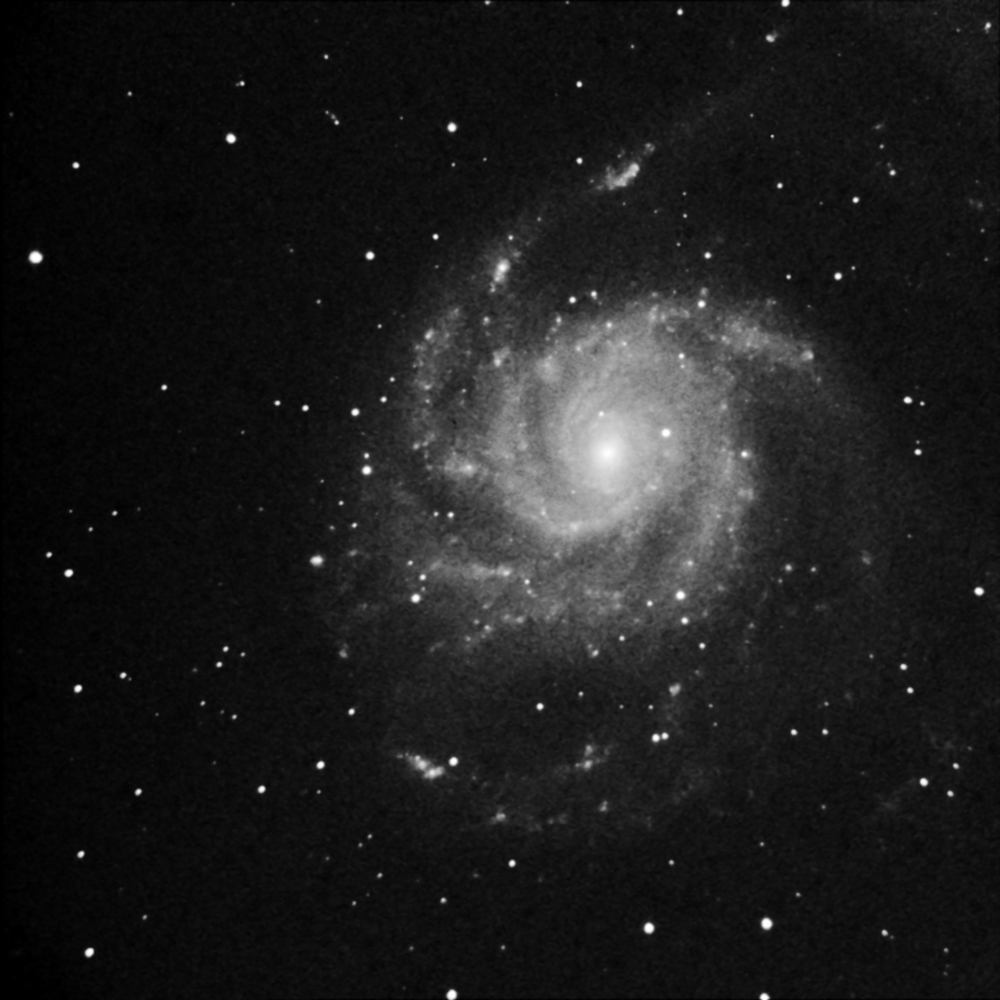
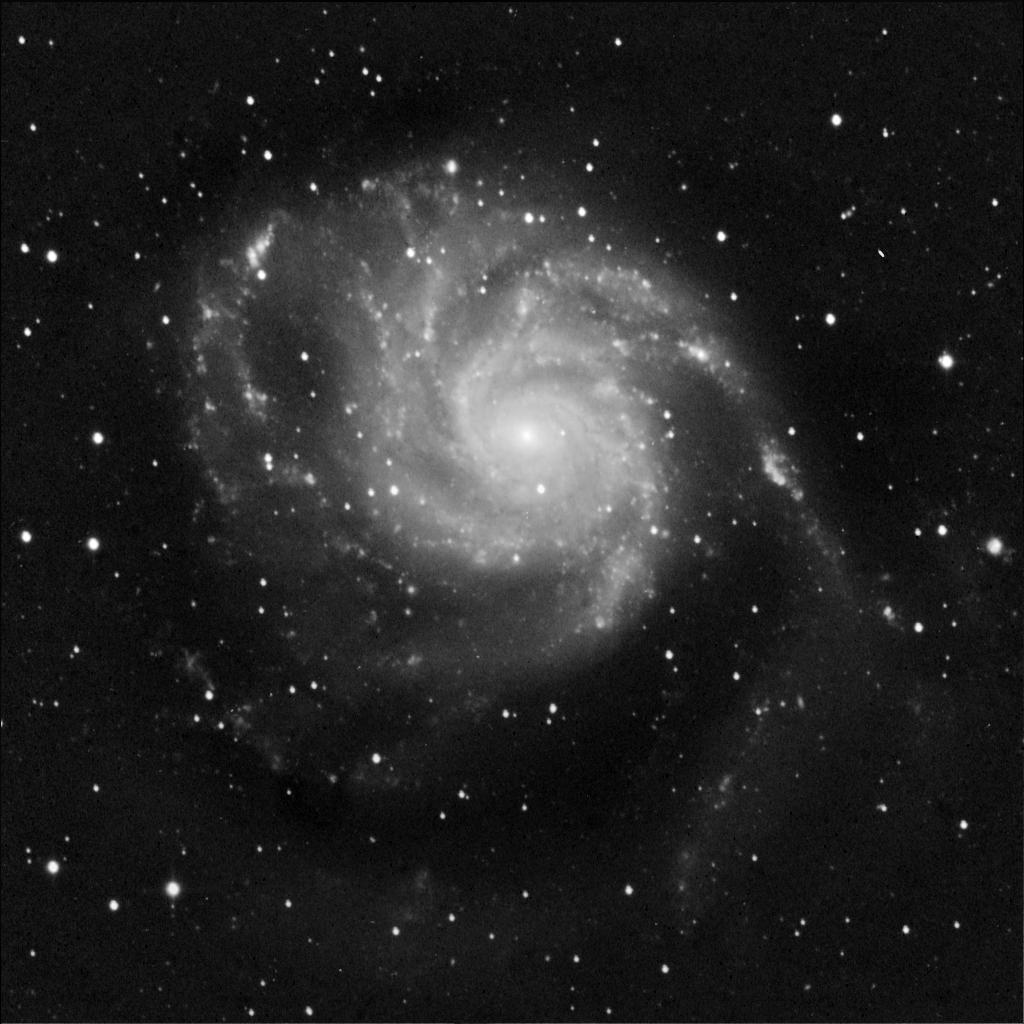
In late August of 2011, a bright supernova erupted in M101, SN 2011fe. At its brightest it was easily visible in small telescopes, the third such supernova in 2011.
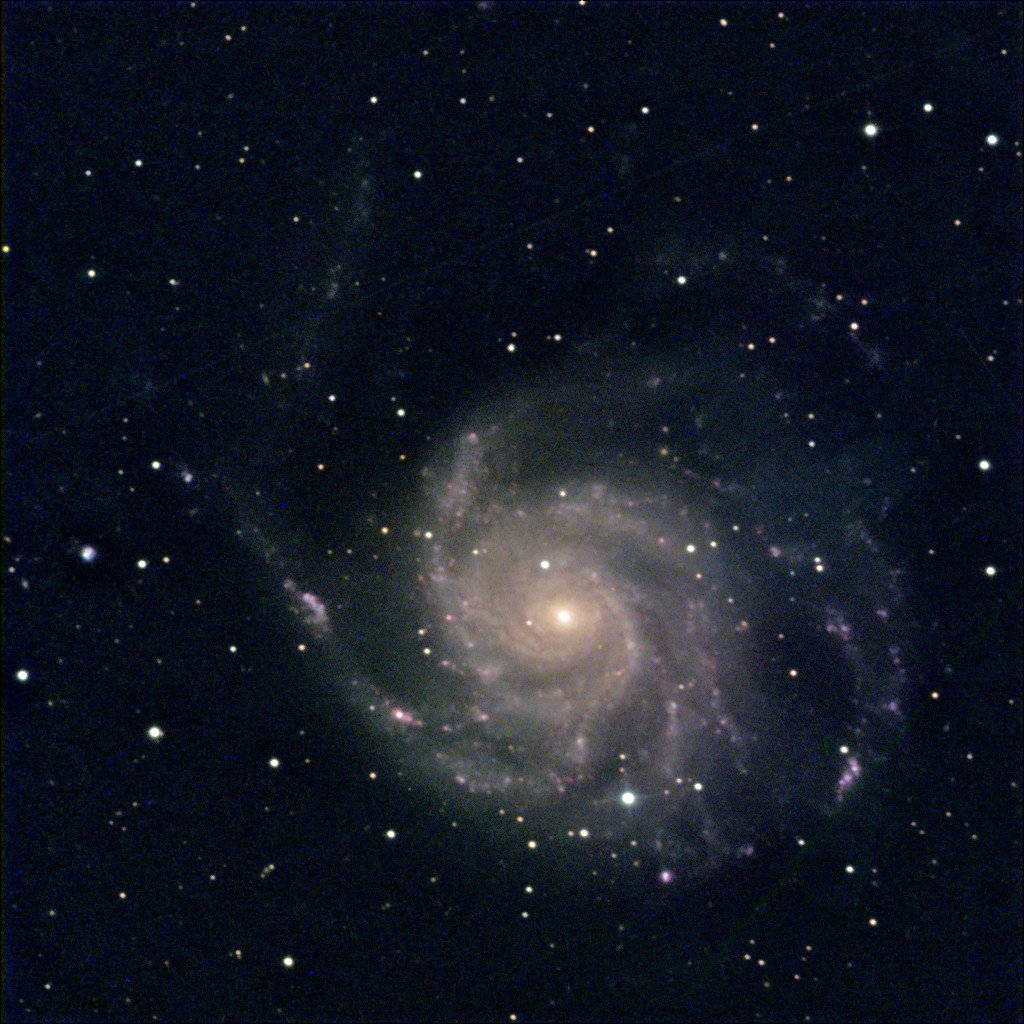
The supernova in M101 on September 17, 2011. The supernova is the bright bluish star to below and slightly to the right of the nucleus of the galaxy.
I followed the supernova for about a year as it faded. More images and the resulting lightcurve are here.